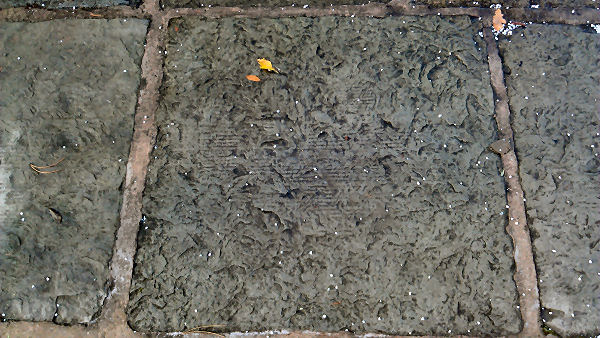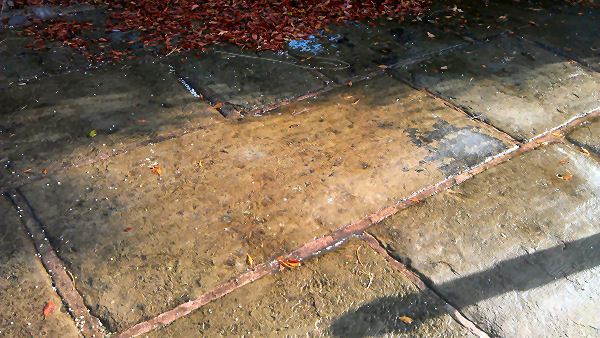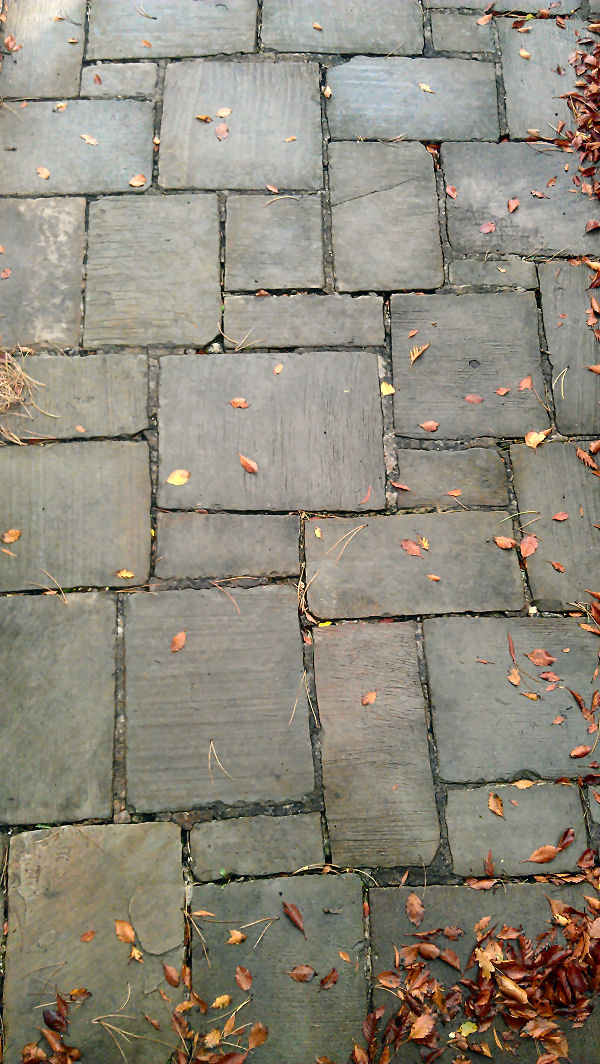Page 1 of 2
Posted: Tue Nov 06, 2012 7:07 am
by Pablo
Ooft that's some amount of money lying there. All the pointing has failed though and there's a few rockers and uneven gaps lovely gaff though.
Posted: Tue Nov 06, 2012 7:08 am
by Pablo
You didn't find any of your sisters "special" albums on there did you. 
Posted: Tue Nov 06, 2012 7:21 am
by lutonlagerlout
calm down paul :laugh:
paving looks good, but that looks like the dreaded geofix from where i sit :O :O :O
LLL
Posted: Tue Nov 06, 2012 8:14 am
by London Stone Paving
Fantastic looking Yorkstone. Clients down here would pay a fortune for material of that quality. Nice pad!
Posted: Tue Nov 06, 2012 8:38 am
by GB_Groundworks
The paving was existing laid when the house was built, not sure on the pointing will look at the full size,
Pablo my sisters just had her second son 6 weeks ago lol
Posted: Tue Nov 06, 2012 9:34 am
by Tony McC
I was up at Clitheroe Castle at the weekend and there's a couple of nice bits of yorkstone there. There's a biggish area in what is referred to as a "Sensory Play Station", where they've laid some salvaged Rossendale flags with the distinctive strip-milling marks, but what struck me was the range of colours.....


....which don't show up particularly well on the camera-phone (naturally, I had left me proper camera in the car at the bottom of the sodding hill!) but blues, greys, buffs, browns and tans galore, and then there is a lovely bit of proper random layout paving around the war memorial. Admittedly, it uses up lots of smallish pieces, and it drifts in its alignment slightly, but it's an all too rare example of how random layouts should look....

Incidentally, if you do find yourself in the vicinity of Clitheroe (Ribble Valley, NE Lankysheer) there's a lovely exhibition at the castle of art inspired by local stone. It revels in the highly original name of "Stonescapes" and almost inevitably, there are one or two paintings which bear an uncanny resemblence to those created by my 3 yr old granddaughter at nursery, but then there a few truly gorgeous paintings, drawings and etchings of northen landscapes, quarries and field-walls that would look great in my living room. Best of all, it costs nowt to get in and it's on from 11am to 4pm each day until the beginning of February.
Posted: Tue Nov 06, 2012 8:21 pm
by ken
Sack the gardener!
In the 2nd photo there’s a bush missing
Posted: Tue Nov 06, 2012 8:42 pm
by dig dug dan
house used to be owned by one of the guys from the prodigy, but nice bit of paving.
that house will be in braintree presumably?
Posted: Tue Nov 06, 2012 9:30 pm
by lutonlagerlout
I would get crucified if i posted a picture like number 3 on here :;):
it has a certain bucolic charm,but the paver needs to get a line and a stihl saw on that lot :laugh:
LLL
Posted: Wed Nov 07, 2012 10:25 am
by Tony McC
That 3rd image is a long way from perfect, but it's still better than a lot of so-called random layouts I see that have been laid using modular imported stone.
It's easy to forget just how much work is involved in creating a random layout with stock, non-modular stone. We've become spoilt from having multi-size modular stuff, either in concrete or stone, which takes out much of the thinking and all of the trimming. When I see things like this, I can more-or-less guess that it was done by apprentice streetmasons as a challenge. They've got the principles right - no long straight lines and no crossed joints, but the variable joint width and alignment drifyt aren't quite as they should be.
Still, it's very apt in its location, looking down from its lofty castle site over the back-to-back terraces that provided many of the young lives that were to be lost as part of the "Accrington Pals" brigades, the fabled "Lions led by Donkeys" of WW1
Posted: Wed Nov 07, 2012 11:55 am
by London Stone Paving
When we first started importing sandstone we used to buy 7 different sizes.
1120x560
840x560
700x560
560x560
560x420
560x280
280x280
We quickly realised that nobody wanted to buy 1120x560, 700x560 or 560x420. As you say Tony. there is much more thought involved with using more sizes (even modular ones) and people dont want the hassle. Whether its progress or not, importers will respond to what their customers are buying.
Posted: Wed Nov 07, 2012 12:31 pm
by Tony McC
I do around a hundred layouts a year using 1120s, 700s and 420s. The more sizes used, the better the completed design, and it's the contrast between the largest and smallest sizes which emphasises the randomness of the layout.
I also do at least another hundred designs using just 3 or 4 sizes (300x300, 300x600, 600x600 and 600x900 is inexplicably popular) and while they do look good, I just know that if I was allowed to introduce another 3 sizes, it could look so much better. And then when you get onto the ranges where there are 10 or 12 modular sizes, the results are usually nothing less than stunning.
Posted: Wed Nov 07, 2012 5:09 pm
by lutonlagerlout
I have laid stonemarket millstone in the full range of sizes before i ever found this site and it was hard runnings
the result inside a large conservatory was great ,but a lot of swearing went into it
cheers LLL
Posted: Wed Nov 07, 2012 6:55 pm
by Tony McC
Funnily enough, one of the very first CAD designs I did for a random layout, way back in '93 I think it was, involved Millstone and that came about because my owld fellah joked that the job had become a millstone around my neck trying to work out what went where. I was more accustomed to working with natural stone in all sorts of odd sizes and hunting for a 'near fit' that could be trimmed to suit.
The first day on a random layout yorkstone job always used to be spent measuring what we had, chalking the sizes onto the flags, and then sorting them into guage widths. Traditionally, most 'straight from the quarry' flags worked ona 3" module, so you tended to get, for example, 18", 21". 24", 27" etc. pieces. Many had been cut down over the years, but a good load of salvaged flags taken from their original home would often have 80% or more that were still 3" modular, and so it was occasionally possible to plot out a design for large sections of the job in hand. All this was done on quadrille paper with a pencil and a well-worn large earser!
When multi-size modular flags first took off with the Marley stuff, it seemed that the job had become too easy all of a sudden!














